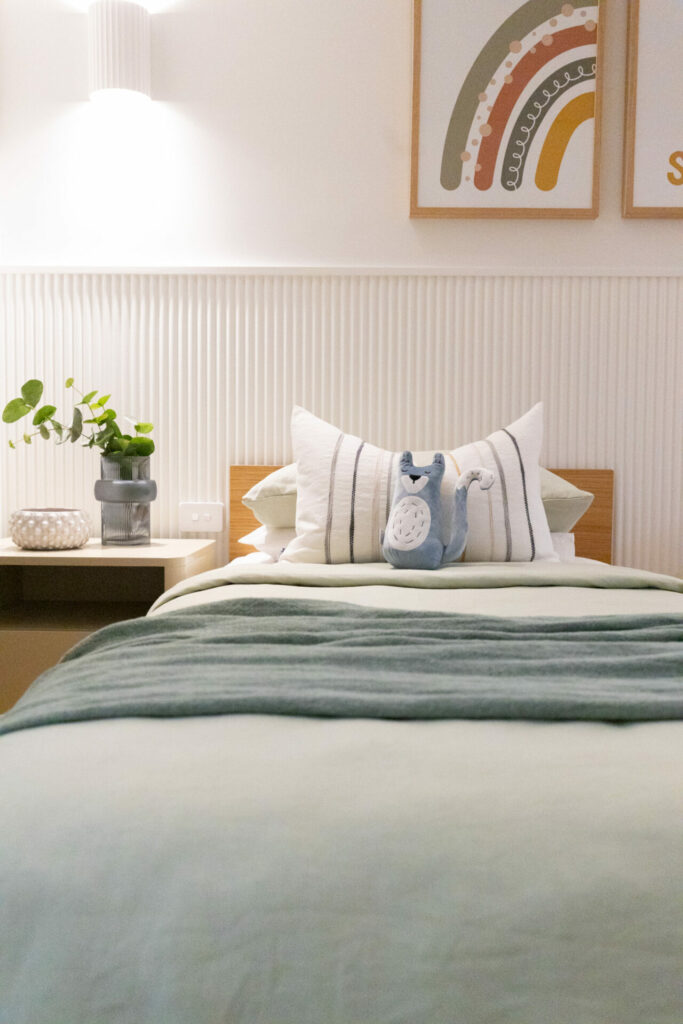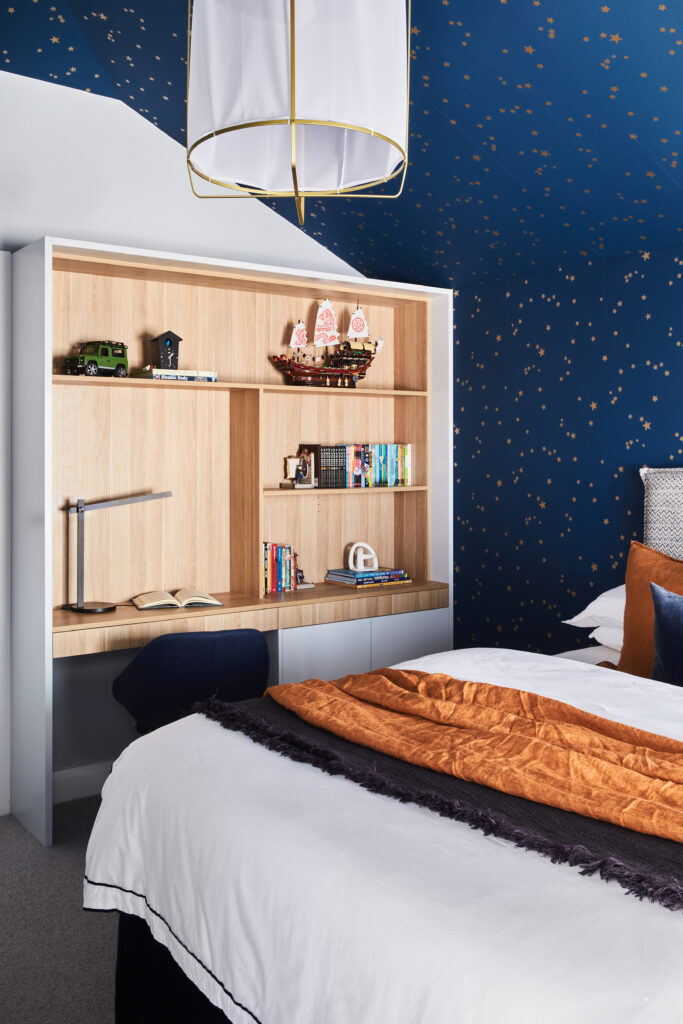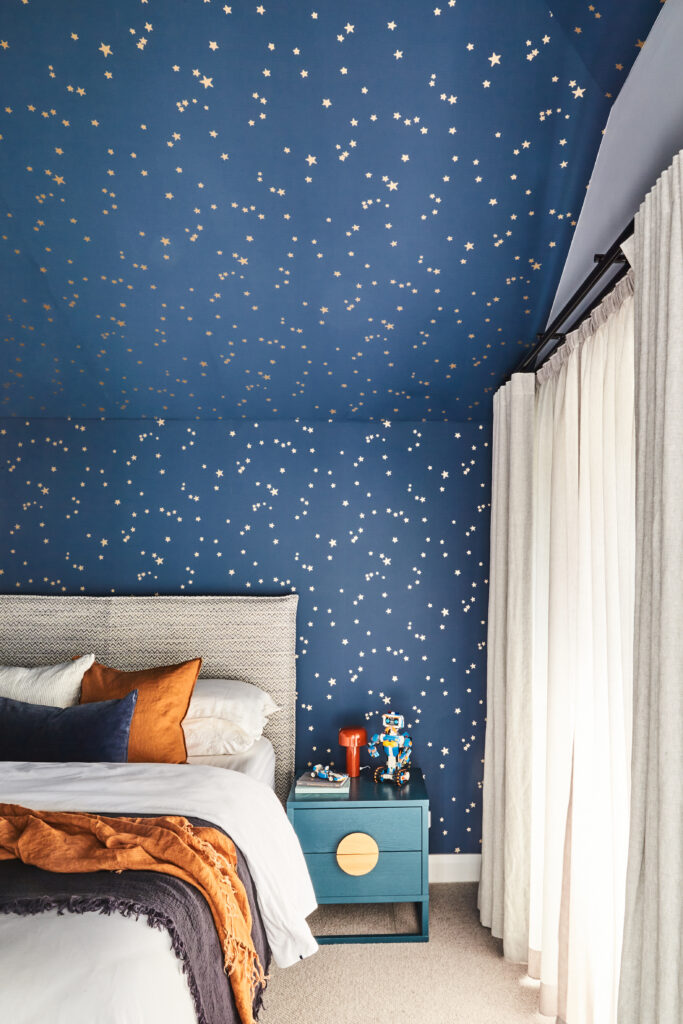Designing the perfect bedroom for children involves more than just choosing cute interior decoration. It’s about creating spaces that spark creativity, encourage imagination but also provide a sense of security and calm. Good Interior Design requires thoughtful consideration of spatial planning and functionality to create a space that not only looks appealing but also serves the practical needs of a growing child. Here’s a closer look at some Interior Design aspects to consider for a child’s bedroom.


An interior designer will begin by considering the layout of the room. Ensure there is ample space for easy movement and play. Keep pathways clear and organise furniture to create distinct zones for sleeping, playing, and studying. A well-organised layout makes it easier for kids to navigate their space independently, this will encourage a sense of autonomy and responsibility.
Kids amass a lot of things – toys, books, art & craft supplies – so an interior design scheme will integrate smart storage solutions into the design to maximise the use of available space. There are many options available for a range of budgets; under-bed storage, wall shelves, and multifunctional furniture to keep the room clutter-free. Efficient storage promotes a tidy environment, making it easier for kids to find and put away their belongings. This, in turn, teaches them the importance of organisation.
Interior Designers choose furniture that adapts to the changing needs of a growing child. Consider modular or adjustable pieces that can be reconfigured as the child ages. Flexible furniture allows for easy transitions in the room’s purpose, accommodating activities like playtime, studying, and relaxing. Consider additions like bean bags for reading or ottomans for extra seating or as a side table.
Allocate a dedicated space for a study, made from either custom joinery or a simple desk. The main priority is to ensure that is well-lit and offers a comfortable space. Providing a designated area for homework or creative projects encourages good study habits and concentration.


After considering the functional aspects, it’s time to have some fun with interior decoration! While themed rooms can be charming, they often risk becoming quickly outdated as children’s interests evolve. Instead, opt for a more versatile and enduring approach by incorporating subtle hints of a theme. This way, the room can adapt as your child’s preferences change over time.
If you don’t have a particular colour in mind, consider choosing a design style that resonates. The Boho style, renowned for its neutral and attainable aesthetic, embraces textures, rattan, and neutral shades, with subtle colour additions through accessories, bedding, and decor elements.
Another popular interior design style is Modern Coastal. Begin by embracing a fresh coastal colour palette featuring soft blues, sandy neutrals, and crisp whites. Infuse beachy textures, such as woven rugs, linen bedding, and cotton throws, to evoke a coastal ambiance within the room.
Interior Design for a child’s bedroom involves a delicate balance of colour, interior decoration choices, and thoughtful design elements. By avoiding strong themes and embracing a soothing colour palette, you can design a space that not only reflects your child’s personality but also provides a tranquil and versatile environment for rest and play. Remember, simplicity and adaptability are the keys to a timeless bedroom that can evolve with your child’s growth.